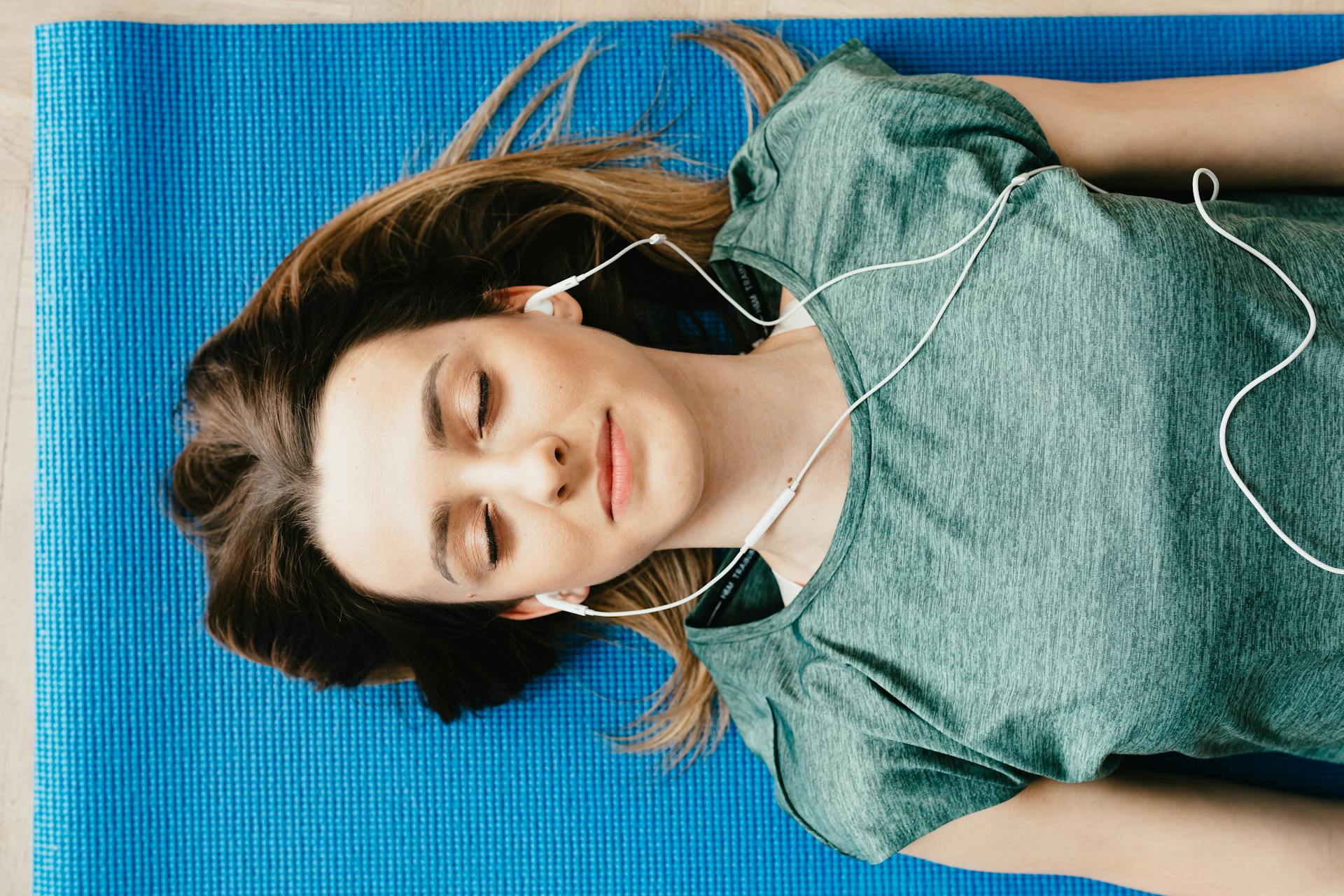Whether you’re tackling spreadsheets, writing a term paper, or managing back-to-back Zoom calls, stress has a sneaky way of tagging along. It hijacks your focus, drains your energy, and makes even simple tasks feel overwhelming.
But what if you could train your brain to feel calm, clear, and focused—without taking a break, popping supplements, or staring at a meditation app?
Welcome to the world of stress relief audio for work and study.
From nature sounds and binaural beats to lo-fi focus tracks and white noise, the right audio can lower stress while boosting productivity. In this guide, you’ll learn how stress relief audio works in the brain, which types to use (and avoid), and how to build a sound strategy tailored to your work or study routine.
Why Use Audio for Work or Study Stress?
Work and study environments are often noisy, chaotic, or filled with internal stress triggers:
- Deadlines
- Constant notifications
- Background noise
- Mental pressure to perform
- Perfectionism or decision fatigue
Stress doesn’t just make you feel bad—it makes your brain less efficient. It shrinks working memory, clouds problem-solving, and makes it harder to transition between tasks.
But here’s where audio helps.
The right sound:
- Reduces cortisol levels (your primary stress hormone)
- Calms the amygdala (your brain’s threat detector)
- Improves concentration and cognitive control
- Shields your attention from distracting stimuli
- Activates the parasympathetic nervous system (the “rest-and-restore” mode)
The result? You’re not just more relaxed—you’re also more productive and less fatigued by the end of the day.
How Sound Affects the Brain During Focus Tasks
Your brain cycles through different brainwave frequencies throughout the day. These frequencies determine whether you feel alert, creative, focused, or foggy.
| Brainwave | Frequency | Associated State |
|---|---|---|
| Delta | 0.5–4 Hz | Deep sleep |
| Theta | 4–8 Hz | Meditation, relaxed flow |
| Alpha | 8–12 Hz | Calm alertness, relaxed focus |
| Beta | 13–30 Hz | Active thinking, stress |
During focus work, your goal is alpha to low-beta.
The right stress relief audio can shift your brain into alpha or theta, which improves concentration, reduces reactivity, and increases the amount of work you can get done in less time.
Best Types of Stress Relief Audio for Work or Study
Let’s break down the audio types that help reduce stress while keeping you focused.
🎧 1. Binaural Beats (Alpha & Low-Beta Frequencies)
What it is: A technique using two different frequencies in each ear to guide your brain into a specific rhythm.
Why it works:
Alpha (8–12 Hz) and low-beta (12–18 Hz) frequencies help maintain alertness without pushing your nervous system into overdrive.
Use it when:
- You need deep focus without mental tension
- You’re dealing with pre-exam anxiety or performance pressure
- You’re stuck in procrastination and need help getting started
Requirements:
- Stereo headphones
- Quiet environment
- 15–60 minute sessions
Best platforms:
Brain.fm, Insight Timer, YouTube (search: binaural beats focus 12 Hz), Spotify
🌿 2. Nature Sounds
What it is: Ambient environmental recordings like rainfall, ocean waves, forest birds, or river flow.
Why it works:
Your brain associates nature with safety. These sounds reduce amygdala activity (your fear and stress center) and improve mood, which boosts resilience during cognitive work.
Use it when:
- You’re working in a noisy office or cafe
- You’re feeling frazzled or emotionally scattered
- You want long, consistent audio that blends in
Bonus:
No headphones required. Works great as background audio for long study sessions.
Great for:
Writers, students, designers, and anyone needing “calm brain” energy.
🔉 3. Lo-Fi Instrumental Music
What it is: Low-fidelity music with soft hip-hop beats, ambient tones, or jazzy chords—typically without lyrics.
Why it works:
Lo-fi often hovers around 60–80 beats per minute, similar to a resting heart rate. It promotes calm focus and blocks out distractions without feeling “boring.”
Use it when:
- You’re in the mood for music but lyrics would distract
- You’re writing, coding, or reading
- You want just enough stimulation to feel “in flow”
Watch out:
Avoid lo-fi with heavy drums or erratic rhythms—they can feel jittery.
Best platforms:
YouTube (search: lofi chill beats to study), Spotify, Apple Music
🔈 4. Brown and Pink Noise
What it is: Constant, static-like background noise with energy concentrated in lower frequencies.
Why it works:
These tones mask distracting noises like voices, footsteps, or sudden movements. Brown noise is deeper and smoother than white noise, making it easier on the nervous system.
Use it when:
- You’re working in a shared or noisy space
- You’re sensitive to sudden background interruptions
- You want neutral, non-musical noise
No rhythm, no melody—just peace.
Best platforms:
Noisli, myNoise, YouTube (search: brown noise 8 hours), Spotify
🧘 5. Breathing Prompts or Focus Meditations
What it is: Short guided audio clips that walk you through deep breathing or short bursts of mindfulness.
Why it works:
A brief pause in your day—even 3–5 minutes—can reset your nervous system. These audio tools are especially helpful for moments of overwhelm or decision fatigue.
Use it when:
- You’re feeling flustered or distracted
- You just finished a stressful meeting
- You’re starting a long work session and want to ground yourself
Best platforms:
Insight Timer, Calm, Headspace, YouTube (search: box breathing audio, focus breathing)
When to Use Stress Relief Audio in Your Workflow
Timing and context matter. Here’s how to use audio to support your workflow—not interrupt it.
🕘 1. Starting Your Work or Study Session
Cue your brain into “focus mode” by playing a familiar calming track as you:
- Organize your desk
- Open your planner
- List your top 3 tasks
Over time, your brain begins to associate that audio with starting strong and staying focused.
🕒 2. During Deep Work Blocks (Pomodoro Style)
Use calming audio during 25–45-minute work intervals. Choose steady, non-distracting tracks like nature sounds, pink noise, or low-volume binaural beats.
End each interval with silence or soft music to give your brain a rest.
🕡 3. Post-Meeting or Mental Recovery Breaks
Instead of scrolling your phone, play a 3–10 minute breathing or meditation track to reset your nervous system.
You’ll return to your next task more grounded and less reactive.
🌙 4. End-of-Day Shutdown Routine
Wrap up your workday with a calming track to signal “no more task mode.” This transition helps your brain separate work stress from home life—especially if you work remotely.
Try:
- Rain sounds
- Sound baths
- Alpha-to-theta binaural mixes
- Nature + ambient layering
Pro Tips for Making It Work
To make stress relief audio part of your working or studying rhythm, try the following:
✔️ Create a “Focus Audio” Playlist
Build a custom set of tracks that help you lock in. Include 3–4 types (nature, lo-fi, pink noise, breathing guides) for different situations.
✔️ Use Noise-Canceling Headphones or Sleep Headbands
If you’re in a distracting space, headphones can isolate you in your sound sanctuary. Look for comfortable, lightweight options for long sessions.
✔️ Experiment With Volume
Lower isn’t always better. Find the minimum effective volume—just enough to block distractions without overloading your senses.
✔️ Try Layering
Many people find layering audio types helpful. Example:
- Lo-fi beat track + rainfall
- Brown noise + ambient focus binaural beats
- Ocean waves + alpha wave meditation
Use apps like Noisli or myNoise to customize.
Mistakes to Avoid
Even calming audio can backfire if used poorly. Here’s what to watch out for:
❌ Music with Lyrics
Lyrics trigger the language-processing parts of your brain, competing with tasks like writing, reading, or critical thinking.
❌ Erratic Tempo or Sudden Volume Changes
Stick to audio with consistent rhythm and dynamics. Surprise crescendos = surprise stress.
❌ Multitasking While Playing Guided Tracks
Don’t listen to guided breathing meditations while replying to emails. These need your full presence—even if just for 3 minutes.
❌ Overreliance
Stress relief audio is a powerful aid—not a crutch. Pair it with good sleep, hydration, movement, and emotional support.
Real-Life Use Cases: What People Are Saying
“I work in a noisy café. Pink noise through earbuds saved my sanity—and my focus.”
– Miguel P., freelance graphic designer
“Before every Zoom presentation, I spend 10 minutes with binaural beats and a body scan. It calms my nerves every time.”
– Alisha R., marketing director
“Rain sounds run in the background all day while I study. It keeps my anxiety at bay without making me sleepy.”
– Jasmine C., law student
Final Thoughts: Stress Less, Focus More
Using stress relief audio while working or studying isn’t just about background noise—it’s about consciously creating an environment where your brain can thrive.
In a world of endless pings, pressure, and distraction, calming audio gives your nervous system something it rarely receives:
- A steady rhythm
- A sense of safety
- A non-verbal reminder to breathe, focus, and be present
So next time you sit down to get something done, don’t white-knuckle it. Put on your headphones, press play, and let the sound do what it does best—help you feel better while working smarter.

